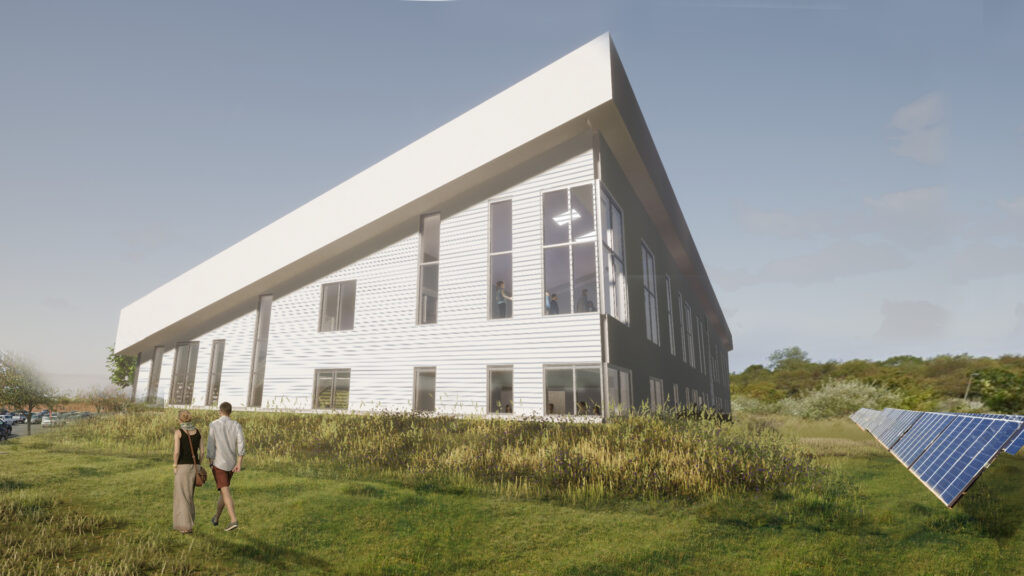Advancing STEM opportunity on Long Island with a sustainable living laboratory
When is a building more than just a building? When it becomes a beacon of possibility for the community, like the new Renewable Energy and Science, Technology and Math (STEM) Center at Suffolk County Community College in Brentwood, Long Island. Slated for a Spring 2023 opening, the $21.3 million, 24,000-square-foot building incorporates classrooms, labs, study lounges and a two-story symposium space. But this building is so much more than just the sum of these parts. A net-zero, sustainable living laboratory that incorporates open renewable systems, the STEM Center holds the potential to advance educational and employment opportunities for people on Long Island and beyond. Here are three ways the STEM Center will benefit the region’s students and communities.
Teaching new skills and advancing new careers
Designed to be a living laboratory, the STEM Center gives students the ability to measure and analyze the solar, photovoltaic, wind and geothermal power technologies that comprise the building’s systems. This teaching facility will offer STEM-related classes and provide highly desired technical training, with faculty helping students develop the skills needed to learn about these new energy systems. With jobs in the renewable energy industry expected to be in demand over the coming years, this type of instruction offered at the STEM Center will not only advance the renewable energy talent pool in this region, it will ensure local students — many from underprivileged backgrounds — can develop employable skills and establish careers in the up-and-coming renewable energy industry.
Demonstrating real world tools and strategies
Our thoughtful design of the STEM Center highlights strategies, tools and renewable systems that can be put in place in new construction to make buildings more sustainable. Our efforts to combine these elements will enable the STEM Center to be self-sufficient, producing all the energy needed for its onsite functions. Understanding the need to demonstrate the accessibility and constructability of sustainable buildings, we opted for readily available energy systems that required little or no modifications for installation and function within the STEM Center.
At the same time, we made deliberate design decisions to advance sustainability. The building’s lighting system is just one example. We developed an energy model to place windows where they would provide the optimal amount of daylight to classrooms, and the windows themselves incorporate high-performance glazing to conserve energy. Taken together, these strategies will ensure that the building will require a minimal amount of outside energy.
Delivering a cleaner, greener Long Island
The STEM Center is already considered a legacy building by the college, one that sets the stage for the design and construction of additional net-zero buildings on its campuses. The impact of this one building may also reach beyond Long Island. Its use of different renewable systems provides a blueprint for designers and constructors to deliver high-performance buildings that also go easy on the grid – and the environment. Replicating renewable energy strategies and tools in building design and construction will help reduce energy consumption from polluting sources, cutting greenhouse gas emissions and providing communities with a cleaner, greener future.








